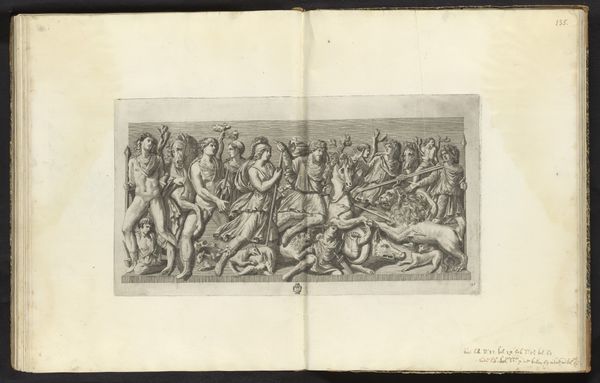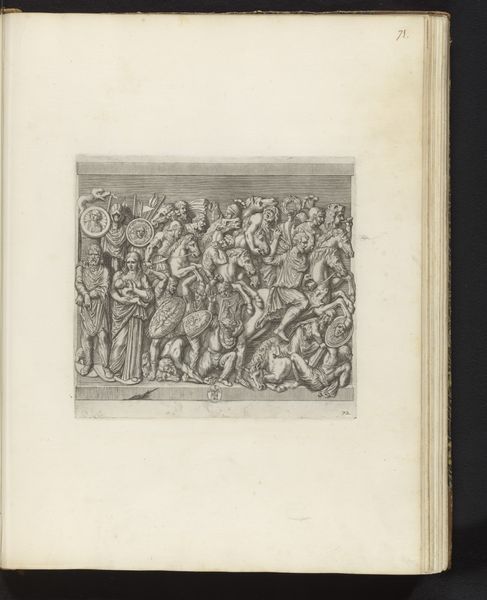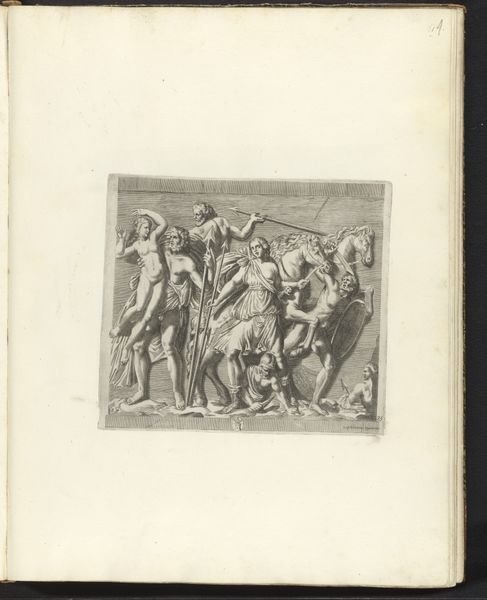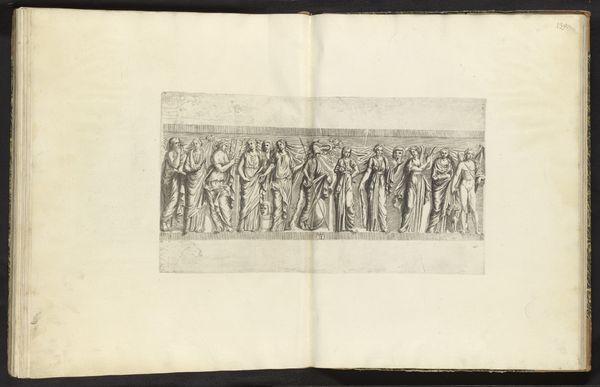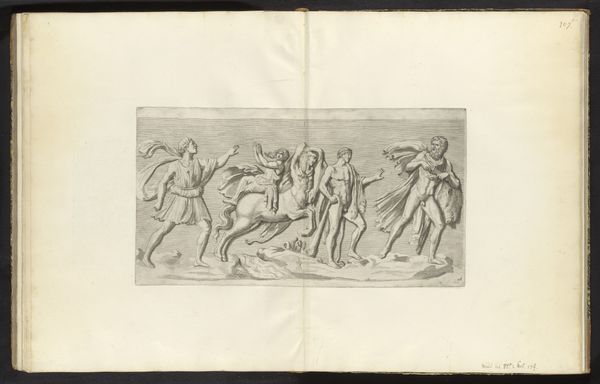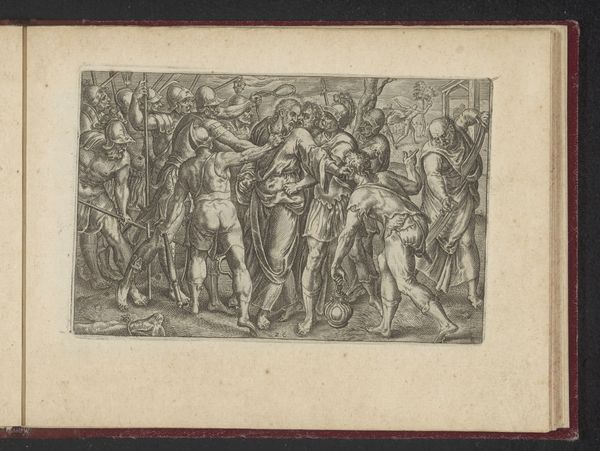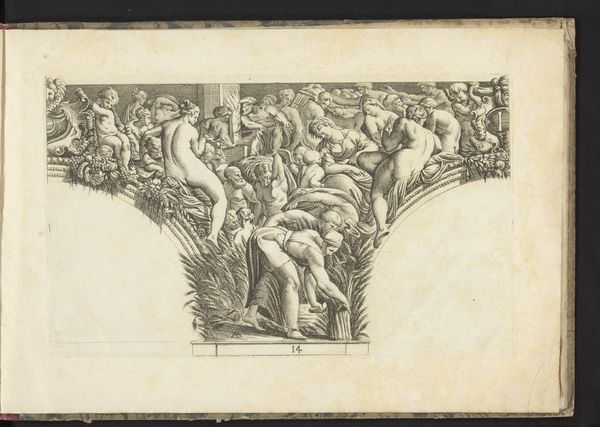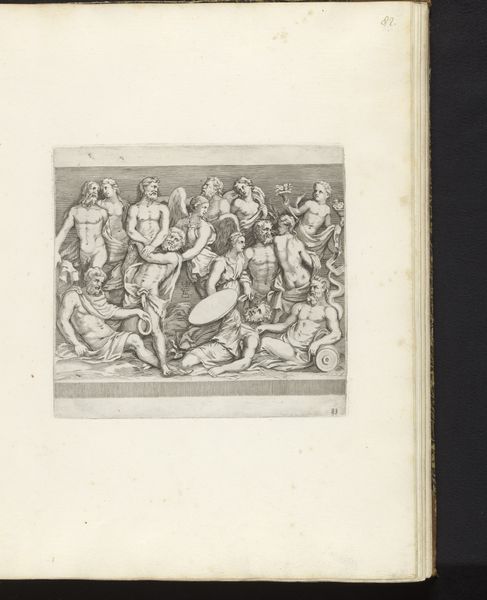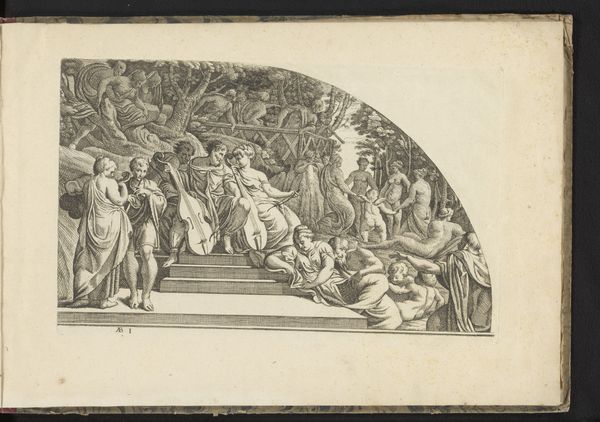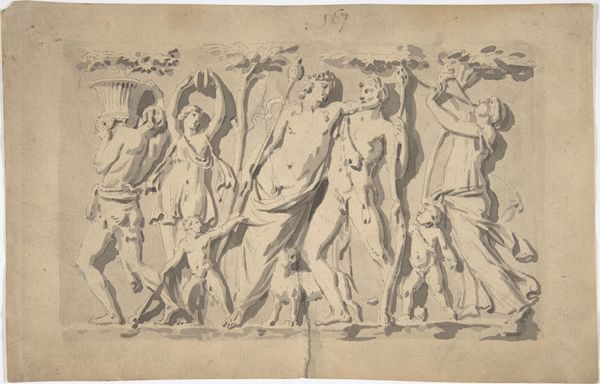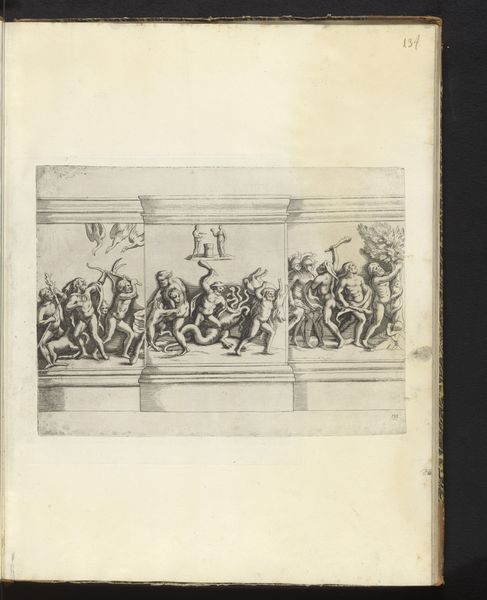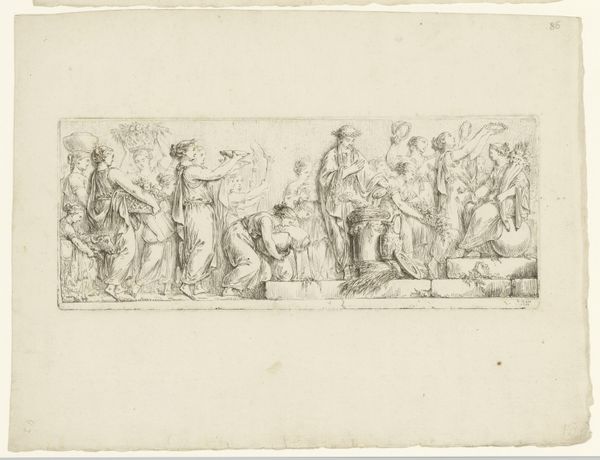
print, engraving
#
baroque
# print
#
pen sketch
#
landscape
#
figuration
#
line
#
history-painting
#
engraving
Dimensions: height 235 mm, width 425 mm
Copyright: Rijks Museum: Open Domain
Curator: This is Reinier van Persijn’s "Bas-relief met de jacht van Adonis," created sometime between 1636 and 1647. It’s currently held in the Rijksmuseum collection, and it's an engraving. What are your initial thoughts? Editor: My first impression is of a story frozen in time. There’s an emotional density here, though muted by the monochrome medium. All of the figures feel classical, very structured and staged. Curator: That structured staging is crucial. Prints like this weren’t merely decorative, they functioned within very specific socio-political structures, circulating ideas about power, gender, and even class. The Adonis myth itself is deeply intertwined with concepts of idealized beauty and the dangers of unchecked passion, so its re-imagining at that time is ripe for consideration through the lens of contemporary social theory. Editor: Exactly! Adonis embodies youthful beauty, so vulnerable and tragically short-lived. Look how Van Persijn highlights the figures themselves; the hunting spears and dogs signal masculinity, even dominance, but rendered in delicate lines. Those recurring dogs symbolize loyalty, and something instinctual lurking beneath the surface of civilization, always ready to erupt. Curator: Absolutely. And consider the symbolism inherent in depicting the hunt. It’s not just a depiction of a leisure activity; it can also speak to broader political struggles – a visual metaphor for dominance over the natural world, and by extension, perhaps other cultures or societal elements deemed “untamed”. I’m especially intrigued by what a “classical” myth like this communicates in 17th century Netherlands. Editor: The clustering of figures certainly intensifies the scene's visual and emotional weight. Those almost repetitive groupings of bodies, plus the dogs – it’s less a depiction of a hunt, and more a symbolic tableau of relationships. But that very staging also somewhat tempers my engagement, pushing me toward analysis rather than emotional resonance. Curator: It is true. Though the narrative is accessible, I’m more drawn to considering the artwork’s function, its participation in the visual language of its time and how it reinforces certain ideals and perhaps questions or destabilizes others. It definitely presents layers of power dynamics to unravel. Editor: A story in stone captured on paper, laden with timeless signs. This brief contemplation really highlights how cultural memory can reside in the seemingly smallest details, and continue to be questioned centuries after the original image was conceived.
Comments
No comments
Be the first to comment and join the conversation on the ultimate creative platform.

